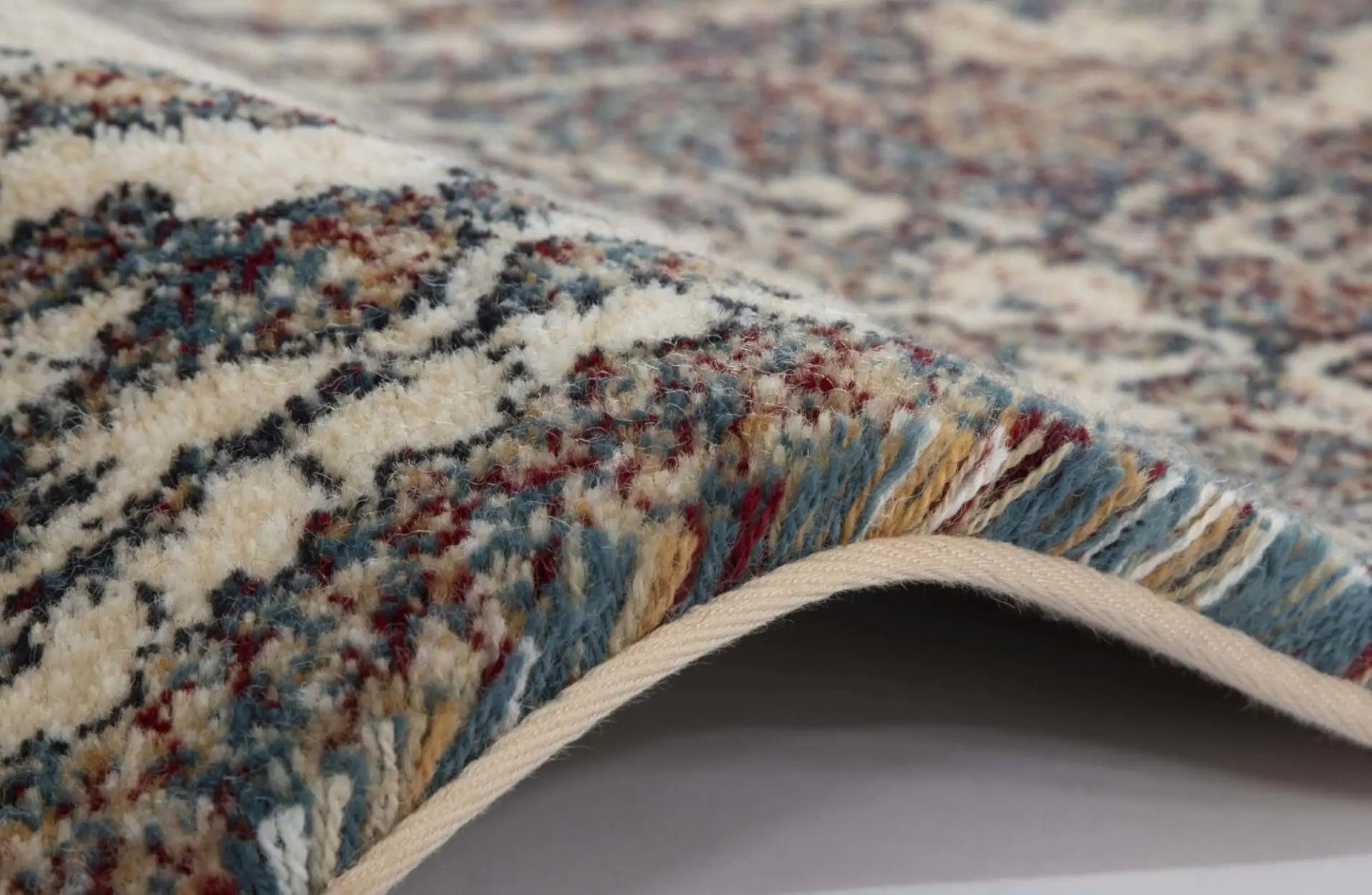

Articles
What Does Pile Mean For Rugs
Modified: January 23, 2024
Discover the meaning of pile for rugs in this informative article. Find out how pile affects the look, feel, and durability of rugs.
(Many of the links in this article redirect to a specific reviewed product. Your purchase of these products through affiliate links helps to generate commission for Storables.com, at no extra cost. Learn more)
Introduction
When it comes to rugs, the term “pile” refers to the texture and thickness of the fibers that make up the rug’s surface. The pile is an essential characteristic that can greatly influence the look, feel, and durability of a rug. Understanding what pile means for rugs is crucial for making informed decisions when selecting the perfect rug for your space.
In this article, we will delve into the concept of pile in rugs, exploring the different types of pile, factors that affect pile quality, and the importance of pile in relation to comfort, durability, and aesthetics. We will also provide maintenance and care tips for keeping your pile rugs looking their best for years to come.
So, let’s dive in and uncover the fascinating world of pile in rugs!
Key Takeaways:
- The pile of a rug significantly impacts its comfort, durability, and aesthetics, making it crucial to consider when selecting and maintaining rugs for your space. Understanding the importance of pile ensures that you can make informed decisions to create a welcoming and long-lasting environment in your home or office.
- Regular vacuuming, spot cleaning for spills and stains, and professional cleaning are essential for maintaining the beauty and longevity of pile rugs. By incorporating proper maintenance practices, you can ensure that your rugs remain clean, fresh, and in optimal condition, enhancing the comfort and aesthetics of your space for years to come.
Read more: What Pile Rug Is Best For A Living Room
Understanding Pile in Rugs
Pile refers to the density, height, and construction of the fibers that make up the surface of a rug. It plays a crucial role in determining the overall look and feel of the rug. Rugs with a higher pile tend to be softer and more luxurious, while those with a lower pile offer a sleeker and more practical appearance.
The pile of a rug is created by either cutting the fibers at the top to create a plush surface or leaving the fibers uncut to form loops. Alternatively, rugs can have a combination of both cut and looped fibers, resulting in a versatile and textured pile. Each type of pile has its own unique characteristics and aesthetic appeal.
The pile of a rug can vary in terms of thickness and density. Thicker pile rugs provide a softer feel underfoot and can offer more insulation and warmth in colder climates. On the other hand, rugs with a lower pile are typically more durable and easier to clean.
It’s also important to consider the material of the fibers used in the pile. Common materials include wool, synthetic fibers like nylon and polyester, and natural fibers like silk or cotton. Each material has its own benefits and drawbacks, such as durability, stain resistance, and tactile qualities.
In addition to the type and material of the pile, other factors such as the twist of the fibers and the construction method can influence the appearance and performance of the rug. A rug with tightly twisted fibers tends to be more resilient and less prone to showing signs of wear, while the construction method can affect the durability and overall quality of the rug.
By understanding the different aspects of pile in rugs, you can make a more informed decision when selecting a rug that meets your specific needs and preferences. Whether you’re looking for a soft and cozy rug for your living room or a durable and practical rug for a high-traffic area, considering the pile is essential in finding the perfect rug for your space.
Different Types of Pile
When it comes to rugs, there are several different types of pile, each with its own unique characteristics and aesthetic appeal. Understanding the differences between these types of pile can help you choose the perfect rug for your home or office. Let’s explore the three main types of pile:
- Cut Pile: Cut pile rugs have their fibers cut evenly across the surface, creating a plush and luxurious texture. This type of pile is soft and comfortable underfoot, making it ideal for areas where you want to create a cozy and inviting atmosphere. Cut pile rugs are available in various styles, such as plush, saxony, and frieze, each offering a different level of softness and thickness.
- Loop Pile: In loop pile rugs, the fibers are left uncut, resulting in small loops that create a textured and durable surface. Loop pile rugs are known for their resistance to wear and tear, making them perfect for high-traffic areas. They also have a more casual and contemporary appearance compared to cut pile rugs. Loop pile rugs can be further categorized into level loop, berber, and multi-level loop, each with its own distinct look.
- Cut and Loop Pile: As the name suggests, cut and loop pile rugs combine the characteristics of both cut pile and loop pile. This type of pile creates a visually interesting pattern or design on the rug’s surface. Cut and loop pile rugs offer a balance between softness and durability, making them versatile options for various areas of your home. They can add depth and texture to a room, and their pattern can create a focal point.
Each type of pile offers its own unique benefits and aesthetic appeal. The choice of pile type depends on various factors, such as the desired look, the level of comfort, and the intended use of the rug. Whether you prefer the plushness of cut pile, the durability of loop pile, or the visual interest of cut and loop pile, there is a type of pile that will suit your preferences and needs.
Cut Pile
Cut pile rugs are a popular choice for those seeking a soft, plush, and luxurious feel underfoot. In this type of pile, the fibers are evenly cut across the surface, creating a smooth and velvety texture. Cut pile rugs are known for their comfort and coziness, making them perfect for areas where you want to create a warm and inviting atmosphere.
There are several styles of cut pile rugs, each offering a different level of softness and thickness:
- Plush: Plush cut pile rugs are the epitome of luxury and comfort. The fibers are dense and have a uniform height, resulting in a velvety smooth surface. Plush rugs have a rich and formal appearance, adding an element of elegance to any space. They are particularly popular in bedrooms and living rooms where comfort is a top priority.
- Saxony: Saxony cut pile rugs are similar to plush rugs but with slightly longer fibers. This creates a more textured and casual look. Saxony rugs are incredibly soft, but the longer fibers can show footprints and vacuum marks more easily. They are best suited for low-traffic areas in the home such as bedrooms and formal living rooms.
- Frieze: Frieze cut pile rugs have twisted fibers that give them a highly durable and textured appearance. The twisted fibers help hide footprints and other marks, making frieze rugs suitable for high-traffic areas and busy households. They have a more casual and contemporary look, adding a touch of modernity to any room.
Each style of cut pile rug offers its own unique benefits, allowing you to choose the level of softness and texture that suits your personal preference and needs. It’s important to keep in mind that cut pile rugs require regular maintenance to keep them looking their best. Vacuuming regularly and using a brush attachment can help to revive and restore the fibers, maintaining their plushness and texture.
Cut pile rugs are versatile and can blend seamlessly with various interior design styles. Whether you’re creating a cozy and comfortable space or adding a touch of elegance to a room, cut pile rugs provide a luxurious and inviting foundation for your decor.
Loop Pile
Loop pile rugs offer a distinct and stylish alternative to cut pile rugs. In this type of pile, the fibers are left uncut, forming small loops across the surface of the rug. Loop pile rugs are known for their durability and resistance to wear, making them ideal for areas with high foot traffic or busy households.
There are several different styles of loop pile rugs, each with its own unique characteristics:
- Level Loop: Level loop pile rugs have loops that are the same height, creating a uniform and textured surface. This style of loop pile is versatile and can work well in various settings, from casual to formal. Level loop rugs are known for their durability and ability to withstand heavy use, making them suitable for hallways, entryways, and other high-traffic areas.
- Berber: Berber loop pile rugs are characterized by larger, chunkier loops. They often have a flecked appearance due to the use of different-colored fibers. Berber rugs originated from the traditional weaving techniques of the Berber people and have a distinct rustic and tribal feel. They are known for their durability and ability to hide dirt and stains, making them a popular choice for family rooms, playrooms, and other areas that require low-maintenance flooring.
- Multi-Level Loop: Multi-level loop pile rugs feature loops at varying heights, creating a textured and visually interesting surface. This style of loop pile offers depth and dimension to a room, with the differing loop heights adding a sense of movement and visual intrigue. Multi-level loop rugs can be used to add a contemporary touch to any space, and they work well in living rooms, bedrooms, and other areas where you want to make a statement.
Loop pile rugs provide a more casual and contemporary aesthetic compared to cut pile rugs. They bring texture and depth to a room, adding visual interest and a touch of unique style. The loops in loop pile rugs also provide a cushioning effect, making them comfortable underfoot.
When it comes to maintenance, loop pile rugs are relatively easy to care for. The loops make it harder for dirt to penetrate the fibers, and regular vacuuming is usually sufficient to keep them clean. However, it’s important to avoid dragging heavy furniture across loop pile rugs, as this can pull or snag the loops.
With their durability, style, and versatility, loop pile rugs are an excellent choice for those seeking a practical and visually appealing flooring option. Whether you opt for a level loop, berber, or multi-level loop style, you can enjoy a rug that combines functionality with fashion.
Read more: What Are Piles In Construction
Cut and Loop Pile
Cut and loop pile rugs offer a unique combination of textured patterns and visual interest. As the name suggests, this type of pile incorporates both cut fibers and looped fibers to create intricate designs on the rug’s surface. Cut and loop pile rugs offer a versatile and stylish option that can complement a variety of decorating styles.
The blending of cut and looped fibers in this type of pile allows for endless possibilities in terms of patterns and designs. This can range from geometric shapes and abstract patterns to floral motifs and intricate details. Cut and loop pile rugs can create a focal point in a room, adding depth and visual appeal to your space.
One of the advantages of cut and loop pile rugs is their ability to hide dirt, stains, and wear. The combination of cut and loop fibers helps to mask imperfections and footprints, making these rugs a practical choice for high-traffic areas or households with pets and children. Additionally, the durability of the looped fibers ensures that cut and loop pile rugs maintain their appearance even in busy environments.
When it comes to maintenance, cut and loop pile rugs require regular vacuuming to remove dirt and debris. It’s important to use a vacuum with adjustable settings to avoid damaging the loops. Spot cleaning any spills promptly is also recommended to prevent stains from setting into the fibers.
Whether you prefer a bold and intricate design or a subtle, textured look, cut and loop pile rugs offer a wide array of options. They can be used as statement pieces in the living room or bedroom, or as stylish additions to entryways and hallways. The versatility of cut and loop pile rugs makes them a popular choice among homeowners and interior designers alike.
With their combination of comfort, durability, and visual appeal, cut and loop pile rugs provide an excellent choice for those looking to add texture and style to their living spaces. Invest in a cut and loop pile rug to create a unique and inviting atmosphere in your home.
Factors Affecting Pile Quality
When selecting a rug, it’s crucial to consider the quality of the pile. The quality of the pile can greatly impact the rug’s durability, appearance, and overall performance. Here are several key factors that affect the pile quality:
- Fiber Material: The type of fiber used in the pile can have a significant impact on the rug’s quality. Common fiber materials include wool, synthetic fibers like nylon and polyester, and natural fibers like silk or cotton. Wool is highly regarded for its resilience, softness, and natural stain resistance. Synthetic fibers offer increased durability and resistance to fading, making them suitable for high-traffic areas. Natural fibers provide a unique texture and a more eco-friendly option.
- Density: The density of the pile refers to the number of fibers per square inch. A higher density means more fibers are tightly packed together, resulting in a denser and more durable pile. Rugs with a higher density are less likely to show signs of wear and tear and tend to have a longer lifespan.
- Height: The height of the pile is another important factor to consider. A taller pile can create a softer and more luxurious feel underfoot, but it may also be prone to crushing and showing footprints. A shorter pile, while less plush, can be more resilient and easier to clean, making it a practical choice for high-traffic areas.
- Twist: The twist of the fibers refers to the way they are spun together. A tighter twist results in a more resilient and durable pile. Rugs with a high twist are better able to resist matting, crushing, and signs of wear and tear, making them suitable for areas with heavy foot traffic.
- Construction Method: The construction method used to create the pile can impact its quality. Hand-knotted rugs are considered the gold standard, as each individual knot is tied by hand, resulting in a dense and durable pile. Tufted rugs are created by punching the fibers through a backing material, offering a softer feel at a more affordable price point. Machine-made rugs are mass-produced using automated machines and typically have a lower pile quality.
By considering these factors, you can make an informed decision when choosing a rug that suits your needs and preferences. Keep in mind that every factor has trade-offs, and the best choice will depend on the specific requirements of your space.
Ultimately, investing in a rug with high-quality pile ensures that it will not only enhance the aesthetics of your space but also withstand the test of time, providing you with long-lasting beauty and durability.
Fiber Material
The type of fiber material used in the pile of a rug plays a significant role in determining its overall quality and performance. Different fiber materials offer varying characteristics in terms of durability, softness, stain resistance, and aesthetics. When choosing a rug, it is important to understand the qualities of different fiber materials to find the one that best suits your needs and preferences. Here are some common fiber materials used in the pile of rugs:
- Wool: Wool is a natural fiber that is highly regarded for its luxurious feel, durability, and natural stain resistance. Wool rugs are known for their softness, warmth, and ability to retain their appearance over time. They are naturally flame retardant and have excellent insulation properties. Wool is a sustainable and renewable resource, making it a popular choice for eco-conscious consumers.
- Synthetic Fibers: Synthetic fiber materials like nylon and polyester are commonly used in rug piles. Nylon is known for its strength and resilience, making it highly durable and suitable for high-traffic areas. It is resistant to stains, fading, and crushing. Polyester, on the other hand, offers a soft and luxurious feel underfoot. It is also highly resistant to stains and fading. Synthetic fiber rugs are often more affordable than those made from natural fibers.
- Silk: Silk is a natural fiber that is synonymous with elegance and luxury. Silk rugs have a smooth and lustrous appearance, adding a touch of sophistication to any space. Silk fibers are delicate and require gentle care, making silk rugs best suited for lower-traffic areas. They offer a beautiful drape and a soft, silky feel underfoot, but they are more susceptible to stains and fading compared to other fiber materials.
- Cotton: Cotton is a natural fiber that is known for its softness, affordability, and versatility. Cotton rugs are lightweight, easy to clean, and often machine washable. They have a casual and comfortable feel, making them popular in casual and contemporary settings. However, cotton rugs may not be as durable as wool or synthetic fiber rugs and may require more frequent maintenance.
Each fiber material has its own unique qualities and benefits, so it’s important to consider your specific needs and preferences when selecting a rug. Factors such as the amount of foot traffic, desired level of softness, stain resistance, and budget should all be taken into account.
When choosing a rug, it’s also worth noting that some rugs may be made from a combination of fibers, such as a wool and silk blend or a wool and synthetic blend. These blends can offer the benefits of multiple fiber types, combining the softness of natural fibers with the durability and affordability of synthetic fibers.
By understanding the fiber material and its characteristics, you can choose a rug that suits your lifestyle, budget, and aesthetic preferences. Whether you opt for the warmth and luxury of wool, the durability of synthetic fibers, or the elegance of silk, selecting the right fiber material is a crucial step in finding the perfect rug for your space.
Density
The density of the pile in a rug refers to the number of fibers per square inch. It is an important factor that greatly affects the overall quality and durability of the rug. Higher density rugs tend to be more durable, resilient, and long-lasting compared to rugs with lower density.
When the fibers in a rug are tightly packed together, the rug becomes denser. This density provides several benefits:
- Enhanced Durability: Rugs with higher density are more resistant to wear and tear. The tightly packed fibers create a strong foundation that can withstand heavy foot traffic, making these rugs ideal for areas that experience a lot of activity.
- Less Matting and Crushing: Dense pile rugs are more resistant to matting and crushing. The denser the fibers, the less likely they are to be flattened or matted down with use. This helps to maintain the rug’s appearance and ensures that it looks fresh and plush for a longer period of time.
- Improved Resilience: High-density rugs have better resilience, meaning they can bounce back and retain their initial shape more effectively. The dense fibers can withstand the weight of furniture or other heavy objects without showing signs of compression, ensuring the rug maintains its original look and feel.
- Reduced Visible Wear: With a higher density, the pile of the rug is less likely to show signs of wear. The tightly packed fibers minimize the appearance of traffic patterns, which can occur with rugs that have lower density and looser fibers.
It’s important to note that density is not solely determined by the thickness or height of the pile, but rather by the number of fibers within a given area. Two rugs with the same pile height can have different densities depending on how closely the fibers are woven or tufted together.
When shopping for a rug, pay attention to the density rating or specification provided by the manufacturer or retailer. A higher density rating indicates a rug with more fibers per square inch, suggesting a higher quality and more durable rug.
However, it’s worth considering that rugs with higher density may also come at a higher price point. The added density necessitates more materials and an increased level of craftsmanship, resulting in a higher cost for the rug. Nevertheless, investing in a rug with high density can be a wise decision, as it ensures a longer lifespan and better performance in the long run.
In summary, the density of the rug’s pile directly influences its durability, resilience, and ability to withstand wear and tear. When choosing a rug, opt for one with higher density for enhanced longevity and appearance retention.
Height
The height of the pile in a rug refers to the length or thickness of the fibers. It is an important factor to consider when selecting a rug, as it influences both the aesthetics and the practicality of the rug. The height of the pile can greatly impact the overall look, texture, and maintenance requirements of the rug.
Rugs can have either a high pile or a low pile, each offering different benefits:
- High Pile: High pile rugs have longer fibers that create a plush and luxurious appearance. These rugs have a soft and comfortable feel underfoot. The longer fibers also provide extra insulation and warmth, making them an excellent choice for colder climates or areas where a cozy atmosphere is desired. High pile rugs can add a touch of elegance and sophistication to a room, creating a visually inviting and comfortable space.
- Low Pile: Low pile rugs have shorter fibers that create a flatter and sleeker surface. These rugs are known for their durability, making them ideal for high-traffic areas in the home. Low pile rugs are also easier to clean and maintain compared to high pile rugs since there are fewer spaces for dirt and debris to get trapped. Additionally, low pile rugs are less prone to showing footprints or vacuum marks, making them a practical choice for busy households or areas where cleanliness is a priority.
When deciding between a high pile and a low pile rug, consider the following factors:
- Intended Use: Think about the purpose of the rug and the amount of foot traffic it will receive. High pile rugs are great for areas where comfort and softness are priorities, such as bedrooms or cozy living rooms. Low pile rugs, on the other hand, work well in high-traffic areas like hallways or dining rooms where ease of cleaning and durability are key.
- Cleaning and Maintenance: Consider the level of maintenance you are willing to undertake. High pile rugs generally require more frequent vacuuming and may need professional cleaning to keep them looking their best. Low pile rugs, with their shorter fibers, are typically easier to clean and maintain with regular vacuuming.
- Style and Aesthetics: Think about the overall look and feel you want to achieve in your space. High pile rugs can create a luxurious, cozy ambiance, while low pile rugs offer a sleek and modern appearance. Consider how the rug will complement your existing decor and furnishings.
Ultimately, the choice between a high pile and a low pile rug depends on your personal preferences, lifestyle, and the specific requirements of the room. Both types of piles have their own benefits and drawbacks, so consider the factors mentioned above to select the pile height that best suits your needs.
Twist
The twist of the fibers in a rug refers to the way they are spun together during the manufacturing process. It is an important factor to consider when assessing the quality and durability of a rug’s pile. The twist affects the appearance, resilience, and the ability of the fibers to withstand wear and maintain their shape over time.
Rugs with a higher twist have tighter or more tightly spun fibers, resulting in a more durable and resilient pile. Here are some key considerations when it comes to the twist of a rug:
- Resilience: Higher twisted fibers have enhanced resilience, meaning they can bounce back and return to their original shape more effectively. This helps to maintain the appearance of the rug and resist matting or crushing. Rugs with a higher twist are ideal for high-traffic areas where foot traffic and furniture weight can compress the pile.
- Durability: The tighter twist of the fibers in a rug improves its durability. Rugs with a higher twist are more resistant to fraying, unraveling, or showing signs of wear and tear. They can withstand frequent use and are less likely to develop visible signs of age or damage.
- Appearance: The twist also affects the appearance of the rug. Higher twisted fibers create a more textured and defined look, adding depth and dimension to the rug’s overall appearance. They can enhance the visual interest of patterned rugs and provide a more tailored and crisp look to solid-colored rugs.
- Maintenance: Rugs with a higher twist are generally easier to maintain. The tightly spun fibers are less likely to trap dirt and debris, making them easier to clean. Regular vacuuming is usually sufficient to remove loose particles and maintain the rug’s appearance.
It’s worth noting that the twist of the fibers can vary from rug to rug, and it is not always prominently advertised. However, you can assess the twist by feeling the rug and observing how well the fibers retain their shape and bounce back when pressed down lightly.
When shopping for a rug, especially in high-traffic areas or homes with pets and children, consider selecting a rug with a higher twist. The increased resilience and durability of the twisted fibers will ensure that your rug maintains its appearance and holds up well to everyday use and traffic.
Remember, the twist of the fibers should be considered in conjunction with other factors such as fiber material, density, and height to make a well-informed decision when choosing a rug that suits your needs, style, and maintenance preferences.
When referring to rugs, “pile” refers to the density and height of the fibers. A higher pile rug will feel softer and more luxurious, while a lower pile rug will be easier to clean and maintain. Consider the level of foot traffic in the area when choosing the pile height for your rug.
Construction Method
The construction method used to create the pile of a rug is a crucial factor that impacts its quality, durability, and overall performance. Different construction methods offer varying characteristics and affect the rug’s appearance, texture, and longevity. Understanding the various construction methods can help you make an informed choice when selecting a rug. Here are some common construction methods:
- Hand-Knotted: Hand-knotted rugs are considered the gold standard in rug construction. Highly skilled artisans meticulously tie individual knots by hand, resulting in a dense and durable pile. Hand-knotted rugs are known for their exceptional craftsmanship, intricate designs, and longevity. They tend to be more expensive due to the time and labor-intensive process involved in creating them. However, their quality and beauty make them highly sought after for both traditional and contemporary interiors.
- Tufted: Tufted rugs are constructed using a tufting gun, which shoots loops of yarn through a backing material. This construction method allows for a wide range of designs and patterns. Tufted rugs are generally more affordable than hand-knotted rugs, making them a popular choice for many homeowners. However, their pile density and longevity may not be on par with hand-knotted rugs.
- Machine-Made: Machine-made rugs are mass-produced using automated machines. They are created by weaving the pile fibers and backing material together. Machine-made rugs are generally uniform in appearance, have consistent pile height, and are more affordable compared to hand-knotted or tufted rugs. While they may lack the intricate craftsmanship of handmade rugs, machine-made rugs are still capable of offering durability and a wide range of designs.
It’s important to mention that the construction method is not the sole factor determining the quality of a rug. Hand-knotted rugs are often associated with high quality, but there are machine-made and tufted rugs that can also possess excellent durability and aesthetic appeal.
When considering the construction method, there are a few things to keep in mind:
- Quality: Hand-knotted rugs are typically considered the highest quality due to the craftsmanship involved. However, well-made machine-made or tufted rugs can still offer excellent durability and design options.
- Price: Hand-knotted rugs are generally more expensive due to the labor-intensive process. Machine-made and tufted rugs tend to be more budget-friendly options, while still providing a wide variety of styles and designs.
- Design Options: Tufted and machine-made rugs often offer a greater variety of designs, patterns, and colors since they can be mass-produced. This makes them a popular choice for those looking for specific styles and customization options.
- Intended Use: Consider the traffic and purpose of the rug when selecting the construction method. Hand-knotted rugs often excel in high-traffic areas, while tufted and machine-made rugs can be suitable for less demanding spaces.
Each construction method has its own advantages and considerations. Assess your needs, preferences, and budget to determine which construction method aligns best with your requirements. Regardless of the construction method, prioritize quality and choose a rug that suits your style and durability expectations.
Importance of Pile in Rugs
The pile of a rug plays a significant role in determining its overall comfort, durability, and aesthetic appeal. Understanding the importance of pile is crucial when selecting a rug for your space. Here are several key reasons why the pile is essential in rugs:
- Comfort and Softness: The pile of a rug contributes to its softness and provides a comfortable surface to walk on. Rugs with a higher pile offer a luxurious and cozy feel underfoot, adding warmth and comfort to your space. This is particularly beneficial in areas where you spend a lot of time standing or walking.
- Durability and Resilience: The quality of the pile affects the rug’s durability and ability to withstand regular wear and tear. High-quality pile, such as tightly twisted fibers or densely packed loops, can enhance the rug’s resistance to crushing, matting, and signs of aging. A durable pile ensures that your rug will maintain its appearance and performance over time, even in high-traffic areas.
- Aesthetics and Style: The pile greatly influences the visual appeal of a rug. The texture, height, and design of the pile can create different looks, adding depth and character to your space. Whether you prefer a plush and sumptuous feel of a high pile rug or a sleek and contemporary look of a low pile rug, the pile enhances the overall style and aesthetics of your room.
Additionally, the pile can also affect other important aspects of a rug:
- Sound Insulation: The cushioning effect of a rug’s pile helps to absorb sound and reduce echo in a room. This is especially beneficial in spaces with hard flooring surfaces, as the pile can minimize noise and create a quieter atmosphere.
- Thermal Insulation: The density of a rug’s pile can provide an extra layer of insulation, helping to retain warmth in colder months. The higher the pile, the more insulation it can offer, making your space more comfortable and energy-efficient.
- Protection: The pile of a rug can act as a protective layer for your flooring. It helps to shield your floors from scratches, dings, and wear caused by foot traffic or furniture. By placing a rug with an appropriate pile in high-traffic areas, you can preserve and extend the life of your flooring.
When selecting a rug, consider the importance of pile in terms of the comfort it provides, the durability it offers, and the impact it has on the overall aesthetics of your space. Take into account factors such as fiber material, density, height, twist, and construction method to ensure that you choose a rug with the desired pile qualities that best align with your needs and preferences.
By understanding and appreciating the importance of pile in rugs, you can make an informed decision that will enhance the comfort, durability, and visual appeal of your home or office.
Read more: What Does Faucet Mean
Comfort and Softness
One of the primary reasons the pile is important in rugs is its contribution to comfort and softness. The pile refers to the texture and thickness of the fibers that make up the surface of the rug. Rugs with a higher pile offer a luxurious and plush feel underfoot, creating a comfortable and inviting atmosphere in your space.
When you walk or stand on a rug with a soft and cushioned pile, you experience a sense of comfort and coziness. Whether you’re starting your day with a barefoot walk across the rug in the bedroom or sinking your feet into a plush rug in the living room after a long day, the softness of the pile enhances the overall comfort of your space and provides relief to tired feet.
The softness of the pile is determined by various factors, such as the type of fiber material and the density of the pile. Natural fibers like wool, silk, or cotton are often prized for their inherent softness and luxurious texture. Synthetic fibers like nylon or polyester can also be incredibly soft and offer a wide range of options in terms of their softness and feel.
In addition to the material, the density of the pile affects the comfort and softness of the rug. Rugs with a higher pile density tend to offer a more sumptuous and plush feel. The tightly packed fibers create a denser surface that provides an extra layer of cushioning, making it enjoyable to walk, sit, or lounge on the rug.
Not only does a soft and comfortable pile enhance the physical comfort of your space, but it also adds a touch of luxury and indulgence to your interior design. It creates a warmer and inviting atmosphere, making your home feel cozy and welcoming for both family members and guests.
When selecting a rug for comfort and softness, consider the intended use of the rug and the level of softness you prefer. Plush and high pile rugs are ideal for bedrooms, living rooms, and areas where you desire a more luxurious feel. On the other hand, low pile rugs with a softer material can be a great choice for areas where easy maintenance and a more subtle comfort are desired, such as dining areas or home offices.
Ultimately, the comfort and softness provided by the pile of a rug contribute to the overall well-being and enjoyment of your living space. By choosing a rug with a soft and comfortable pile, you can create an inviting and cozy environment that envelops you in a sense of luxury and relaxation.
Durability and Resilience
Another significant aspect of the importance of pile in rugs is its impact on the durability and resilience of the rug. The quality and construction of the pile play a crucial role in determining how well the rug will hold up to everyday use and maintain its appearance over time.
Rugs with a high-quality and durable pile are designed to withstand the rigors of daily life. They are constructed in a way that ensures they can resist wear, foot traffic, and the demands of a busy household. A durable pile is essential, especially for rugs placed in high-traffic areas like entryways, hallways, or living rooms.
The durability of the pile can be influenced by several factors:
- Fiber Material: The type of fiber material used in the pile can greatly affect the rug’s durability. Natural fibers like wool are known for their resilience and ability to withstand wear and tear. Synthetic fibers like nylon or polyester are highly durable and resistant to stains and fading. These fiber materials are often chosen for their durability and longevity.
- Density: The density of the pile impacts its durability. Rugs with a higher density, meaning more tightly packed fibers, tend to be more durable and resilient. They are less prone to showing signs of wear and tear or matting. Higher density rugs can handle heavy foot traffic and are suitable for areas with children or pets.
- Twist: The twist of the pile fibers affects their resilience and durability. A higher twist means the fibers are tightly spun together, creating a stronger and more resilient pile. This quality allows the rug to withstand foot traffic, vacuuming, and the weight of furniture without becoming matted or flattened.
- Construction Method: The construction method used to create the pile can also impact the durability of the rug. Hand-knotted rugs, for example, are known for their exceptional craftsmanship and durability. Tufted and machine-made rugs can also offer durability and longevity depending on their quality and design.
A resilient pile ensures that the rug maintains its shape, appearance, and overall integrity over time. It prevents the fibers from crushing or matting down, allowing the rug to look fresh and new even after years of use. The durability of the pile extends the lifespan of the rug, reducing the need for frequent replacements and making it a worthwhile investment.
By choosing a rug with a durable and resilient pile, you can enjoy a beautiful and long-lasting floor covering. It will withstand the demands of everyday life, maintain its appearance, and continue to enhance your space for years to come.
Aesthetics and Style
The pile of a rug plays a crucial role in enhancing the aesthetics and style of a space. It contributes to the overall visual appeal and sets the tone for the room’s ambiance. The texture, height, and design of the pile can dramatically impact the rug’s appearance and its ability to complement your interior design scheme.
One of the primary ways in which the pile influences the aesthetics of a rug is through its texture. Rugs with a higher pile, such as shag or plush rugs, create a sense of luxury and opulence. The added softness and depth of the pile increase visual interest and make a bold and inviting statement in a room.
Conversely, rugs with a low pile have a sleeker and more minimalistic appearance. They offer a clean and streamlined look that can work well in contemporary or modern interior designs. Low pile rugs are also versatile, as they can easily complement various styles without overwhelming the space.
The height of the pile also affects the way a rug interacts with light in a room. Higher pile rugs tend to create more shadows and depth, adding dimension to the space. This can create a cozy and intimate atmosphere, especially in areas like bedrooms or sitting areas. On the other hand, low pile rugs reflect light more evenly, making them an excellent choice for bright and open spaces where a sense of spaciousness is desired.
Moreover, the design of the pile can significantly impact the visual appeal of a rug. Rugs with intricate patterns or carved designs can add a level of sophistication and sophistication to any room. Pile with different levels, such as cut and loop or sculpted piles, can create tactile interest and add a three-dimensional effect to the rug’s design.
When selecting a rug for its aesthetic value, consider the overall style and theme of the room. The pile should complement the existing decor and furnishings, harmonizing with the color scheme and overall ambiance. The right rug can act as a focal point or add subtle texture and visual interest to your space.
Remember that the aesthetics and style of a rug are subjective and personal to each individual. Consider your own preferences, the mood you want to create, and the overall atmosphere you desire in the room. By choosing a rug with the right pile aesthetics and style, you can transform the look and feel of your space to reflect your unique taste and personality.
Maintenance and Care for Pile Rugs
Maintaining and caring for your pile rugs is essential to preserve their beauty, prolong their lifespan, and ensure that they continue to look their best over time. The specific requirements for maintenance may vary depending on the type of pile and fiber material used in your rug. However, here are some general tips to help you keep your pile rugs in excellent condition:
- Regular Vacuuming: Regular vacuuming is crucial to remove loose dirt, dust, and debris from the rug’s surface. Use a vacuum cleaner with adjustable settings and a brush or beater bar attachment suitable for your rug’s pile height. Vacuum in different directions to ensure thorough cleaning.
- Spot Cleaning: Attend to spills and stains promptly to prevent them from setting into the fibers. Blot the affected area with a clean, white cloth or paper towel to absorb as much of the spill as possible. Avoid rubbing, as it may spread the stain. Use a mild detergent or carpet cleaner specifically formulated for the type of fiber material in your rug, following the manufacturer’s instructions.
- Professional Cleaning: For heavily soiled rugs or those requiring a deeper clean, professional cleaning is recommended. Professional cleaners have the knowledge, expertise, and specialized equipment to safely and effectively clean your pile rug without causing damage. Follow the manufacturer’s guidelines or consult with a professional cleaner regarding the appropriate frequency of professional cleaning.
- Frequent Rotation: To ensure even wear and prevent specific areas of the rug from experiencing excessive foot traffic, rotate your rug every six months. This helps distribute the weight and traffic pattern evenly across the rug, extending its lifespan.
- Avoid Direct Sunlight: Prolonged exposure to direct sunlight can cause the colors in your rug to fade over time. Protect your pile rug from excessive sunlight by using curtains, blinds, or UV-protective window film. If possible, rotate the rug periodically to ensure consistent exposure to sunlight.
- Use Rug Pads: Placing a quality rug pad beneath your pile rug offers various benefits. Rug pads provide additional cushioning, improve stability, prevent slipping or sliding on hard floors, and reduce wear and tear by preventing the rug from rubbing directly against the floor. Ensure the rug pad is suitable for your floor type and cut it slightly smaller than your rug to avoid it being visible.
- Avoid Heavy Furniture: If you have furniture placed on your pile rug, use furniture pads to distribute the weight and prevent the legs from crushing or damaging the fibers. Avoid dragging heavy furniture across the rug, as it can cause pulls or tears in the pile.
- Regular Maintenance Inspections: Periodically inspect your rug for any signs of damage, such as loose threads, unraveling edges, or moth infestation. If you notice any issues, address them immediately to prevent further damage or deterioration.
Remember to always refer to the care instructions provided by the rug manufacturer, as specific cleaning and maintenance recommendations may vary depending on the fiber material and construction of your pile rug. By following these maintenance and care tips, you can ensure that your pile rug remains in excellent condition for years to come, preserving its beauty and longevity.
Read more: What Does Chandelier Mean
Regular Vacuuming
Regular vacuuming is an essential part of maintaining and caring for your pile rugs. Vacuuming not only helps to keep your rugs clean and free from dirt and debris but also preserves the appearance and prolongs the life of the fibers. Here are some tips for effective and proper vacuuming of your pile rugs:
- Select the Right Vacuum: Use a vacuum cleaner that is suitable for your specific type of pile rug. Opt for a vacuum with adjustable settings and a brush or beater bar attachment. If your rug has a delicate pile or fringe, consider using a vacuum cleaner with a suction-only setting or a handheld vacuum to avoid any potential damage.
- Get Rid of Loose Dirt and Debris: Before vacuuming, it’s a good idea to gently shake your rug outside or use a rug beater to remove any loose dirt and debris. This will help prevent the buildup of particles in your vacuum cleaner and ensure the most effective cleaning.
- Adjust the Vacuum Settings: Adjust the height settings of your vacuum cleaner according to the pile height of your rug. For high pile rugs, raise the height to allow the brush or beater bar to gently agitate and clean the fibers. For low pile rugs, lower the height to ensure effective suction and cleaning without causing any damage.
- Vacuum in Different Directions: To thoroughly clean the entire surface of your rug, vacuum in different directions. Start by vacuuming in the direction of the pile and then continue with crosswise strokes. This helps to dislodge and remove embedded debris and ensures a more thorough cleaning.
- Take Extra Care with Fringe: If your rug has fringe, be careful not to vacuum over the fringe or get it caught in the vacuum cleaner. Use a handheld vacuum or gently use a soft brush to clean the fringe separately.
- Frequent Vacuuming: Regularly vacuum your pile rug to prevent dirt and debris from settling deep into the fibers. The frequency of vacuuming depends on the level of foot traffic and the amount of dirt in your home. Aim to vacuum at least once a week for lower traffic areas and more frequently for high traffic areas or if you have pets or allergies.
- Clean the Vacuum Cleaner: Regularly clean and maintain your vacuum cleaner to ensure optimal performance. Empty the vacuum bag or canister regularly, clean or replace the filters as needed, and check for any blockages in the hoses or brush attachments.
Regular vacuuming not only removes dust and dirt but also helps to fluff up the pile, keeping your rug looking fresh and maintaining its texture and appearance. It also helps to minimize the risk of allergens and prevents the fibers from becoming matted or crushed.
Remember to follow the manufacturer’s instructions and recommendations provided with your vacuum cleaner, as well as any specific care instructions for your pile rug. By implementing regular vacuuming as part of your rug maintenance routine, you can enjoy cleaner, healthier, and longer-lasting pile rugs in your home.
Spot Cleaning
Spot cleaning is an essential technique for promptly addressing spills and stains on your pile rugs. The quicker you can attend to a stain, the higher the chances of successfully removing it without leaving a lasting mark. Proper spot cleaning ensures that your rugs stay fresh, clean, and free from unwanted blemishes. Here are some steps to effectively spot clean your pile rugs:
- Act Quickly: As soon as a spill occurs, act swiftly to prevent the stain from setting into the fibers. Blot the affected area gently with a clean, white cloth or paper towel to blot up any excess liquid.
- Avoid Rubbing: When blotting the spill, avoid rubbing or scrubbing the area vigorously, as it can cause the stain to spread and further embed into the fibers. Instead, apply gentle pressure and work from the outer edges of the stain toward the center to prevent it from spreading.
- Identify the Stain: Take note of the type of stain you are dealing with, as different stains may require different cleaning methods and solutions. Common household stains include food and beverage spills, pet accidents, or dirt and mud. Refer to specific stain removal guides or consult with a professional for targeted advice if needed.
- Use Appropriate Cleaning Solutions: Depending on the type of stain, you can prepare a cleaning solution using mild detergent or consider using specialized carpet cleaners formulated for the specific type of fiber material in your rug. Always follow the manufacturer’s instructions and test the cleaning solution on a small, inconspicuous area of the rug before using it on the stain.
- Blot, Don’t Soak: Apply the cleaning solution to a clean, white cloth or sponge and gently blot the stained area. Avoid saturating the rug with excessive liquid, as it can penetrate the backing and underpad, leading to potential mold or mildew growth. Blot with a clean, dry cloth afterward to absorb as much moisture as possible.
- Repeat if Necessary: If the stain is persistent, you may need to repeat the spot cleaning process several times until the stain is lifted. Be patient and persistent, but avoid excessive scrubbing, as it can damage the rug fibers.
- Dry Thoroughly: After spot cleaning, ensure that the treated area is completely dry to prevent any residual moisture from attracting dirt and causing further stains. You can use a fan or open windows to facilitate the drying process.
It’s important to note that certain stains, such as oil-based or dye-based ones, may require professional cleaning to ensure complete removal without damaging the pile or the rug. If you are unsure or if the stain persists, it’s always best to consult a professional rug cleaner for guidance.
By addressing stains immediately and utilizing proper spot cleaning techniques, you can successfully remove most common spills and stains, keeping your pile rugs looking clean and fresh. Regular spot cleaning, combined with routine vacuuming and professional cleaning when necessary, helps to maintain the beauty and longevity of your pile rugs for years to come.
Professional Cleaning
While regular vacuuming and spot cleaning can effectively maintain the cleanliness and appearance of your pile rugs, professional cleaning is essential to deep clean and revitalize them periodically. Professional rug cleaning goes beyond surface-level cleaning, ensuring that embedded dirt, allergens, and grime are thoroughly and safely removed from the fibers. Here’s why professional cleaning is important for your pile rugs:
- Deep Cleaning: Over time, dirt, dust, pet dander, and other debris can accumulate deep within the fibers of your pile rug. Professional cleaning utilizes specialized equipment and techniques that go beyond what regular vacuuming can achieve. The cleaning process helps to extract embedded particles, rejuvenate the pile, and restore the rug’s original beauty.
- Stain Removal: Professional cleaning can effectively target stubborn stains that may be difficult to remove with regular spot cleaning methods. Trained technicians have the knowledge and expertise to identify the type of stain and apply the appropriate cleaning solutions and techniques to lift and eliminate them without causing damage to the fibers.
- Prolongs Lifespan: Regular professional cleaning helps to extend the lifespan of your pile rug. The deep cleaning process removes deep-seated dirt and contaminants that can accelerate wear and tear if left unaddressed. By keeping your pile rug clean and free from damaging particles, you can enjoy its beauty and functionality for a longer period.
- Preserves Appearance: Professional cleaning helps to restore the vibrancy and freshness of your pile rug. It removes embedded dirt and grime that can dull the colors and diminish the appearance of the rug over time. The cleaning process also fluffs up the pile, revitalizing its texture and ensuring that it looks plush and inviting.
- Analyzes and Addresses Special Requirements: A professional rug cleaner can assess the specific needs of your pile rug, including fiber material, pile height, construction method, and any unique features. They have the expertise to determine the most suitable cleaning methods and solutions for your rug, ensuring that it is cleaned safely and effectively without causing any damage.
- Prevents Damage: Incorrect cleaning methods or harsh chemicals can potentially damage the fibers and ruin the appearance of your pile rug. Professional rug cleaners use industry-approved cleaning techniques and products that are safe for various types of fibers and constructions. They are equipped to handle delicate rugs and ensure that the cleaning process does not compromise their integrity.
- Expert Knowledge and Experience: Professional rug cleaners have the training, experience, and specialized equipment to handle a wide range of pile rugs. Their expertise enables them to identify the best cleaning approach for your specific rug, taking into account its fiber material, pile height, and construction method. They can also provide recommendations for ongoing maintenance and care to help you preserve your rug’s condition.
The frequency of professional cleaning depends on various factors, including the amount of foot traffic your rug experiences, the presence of pets or children, and specific environmental conditions. As a general guideline, professional rug cleaning is recommended every 12 to 18 months for rugs in typical residential settings.
By investing in professional cleaning for your pile rugs, you can ensure that they remain clean, fresh, and in optimal condition. Regular professional cleaning will not only enhance the appearance and longevity of your rugs but also contribute to a healthier indoor environment for you and your family.
Conclusion
In conclusion, the pile of a rug plays a vital role in its comfort, durability, and overall aesthetics. Understanding the different aspects of pile, including fiber material, density, height, twist, and construction method, is crucial when selecting the perfect rug for your space and ensuring its long-term maintenance.
The pile of a rug directly impacts the comfort and softness underfoot. Whether you prefer the luxurious feel of a high pile rug or the sleekness of a low pile rug, the pile enhances the overall comfort and coziness of your home. The durability and resilience of the pile are essential for withstanding everyday wear and maintaining the rug’s appearance and longevity over time.
Furthermore, the pile significantly enhances the aesthetics and style of your space. The texture, height, and design of the pile contribute to the visual interest, warmth, and character of a room. By choosing a rug with the right pile characteristics, you can create a space that reflects your personal style and creates a welcoming atmosphere.
Maintenance and care are paramount for preserving the beauty and prolonging the life of your pile rugs. Regular vacuuming, spot cleaning for spills and stains, and professional cleaning at appropriate intervals all contribute to keeping your rugs in optimal condition. Following these maintenance practices helps maintain cleanliness, prevent damage, and ensure that your pile rugs continue to be a beautiful and functional part of your home.
In summary, understanding the importance of pile in rugs allows you to make informed decisions when selecting, maintaining, and caring for your rugs. By taking into consideration factors such as comfort, durability, style, and proper maintenance, you can enjoy the many benefits that well-maintained pile rugs bring to your space, including comfort, beauty, and longevity.
So next time you’re in search of a new rug or tending to an existing one, remember the significance of pile and incorporate this knowledge to make the best choices for your home or office. Your pile rugs will not only enhance the visual appeal of your space but also provide comfort and durability for years to come.
Frequently Asked Questions about What Does Pile Mean For Rugs
Was this page helpful?
At Storables.com, we guarantee accurate and reliable information. Our content, validated by Expert Board Contributors, is crafted following stringent Editorial Policies. We're committed to providing you with well-researched, expert-backed insights for all your informational needs.
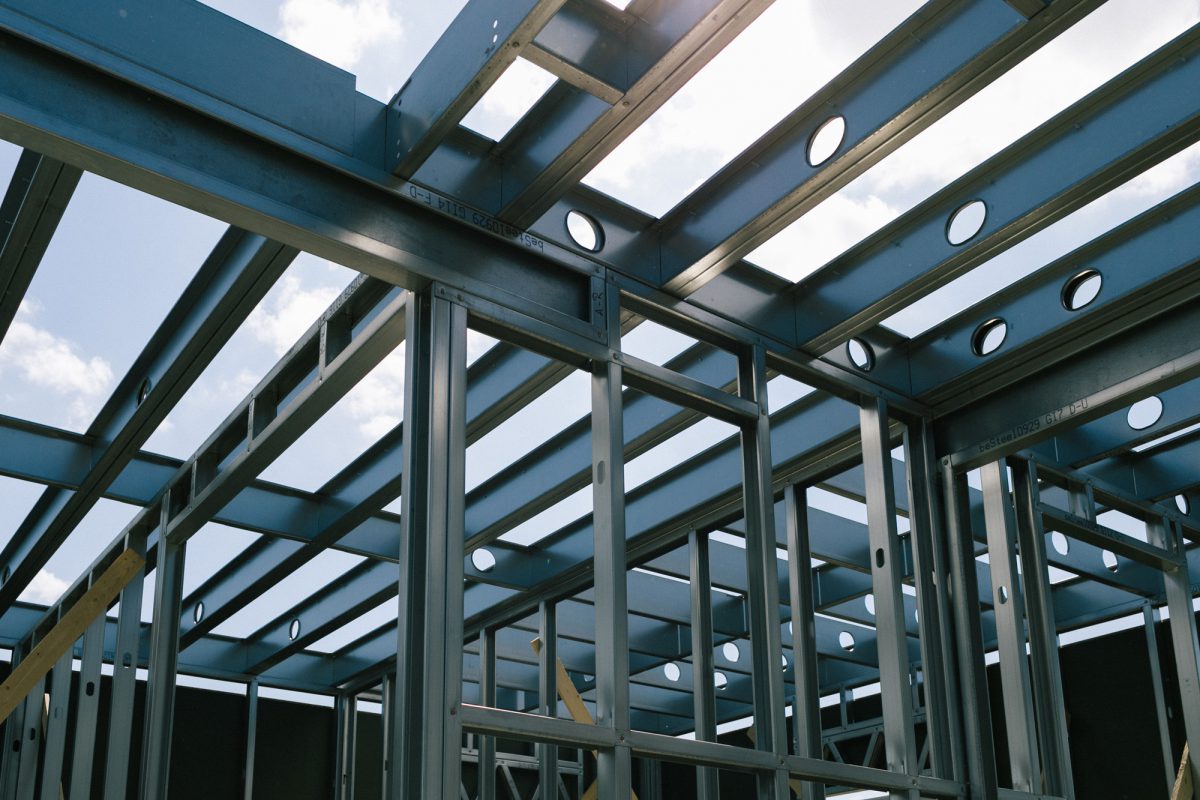



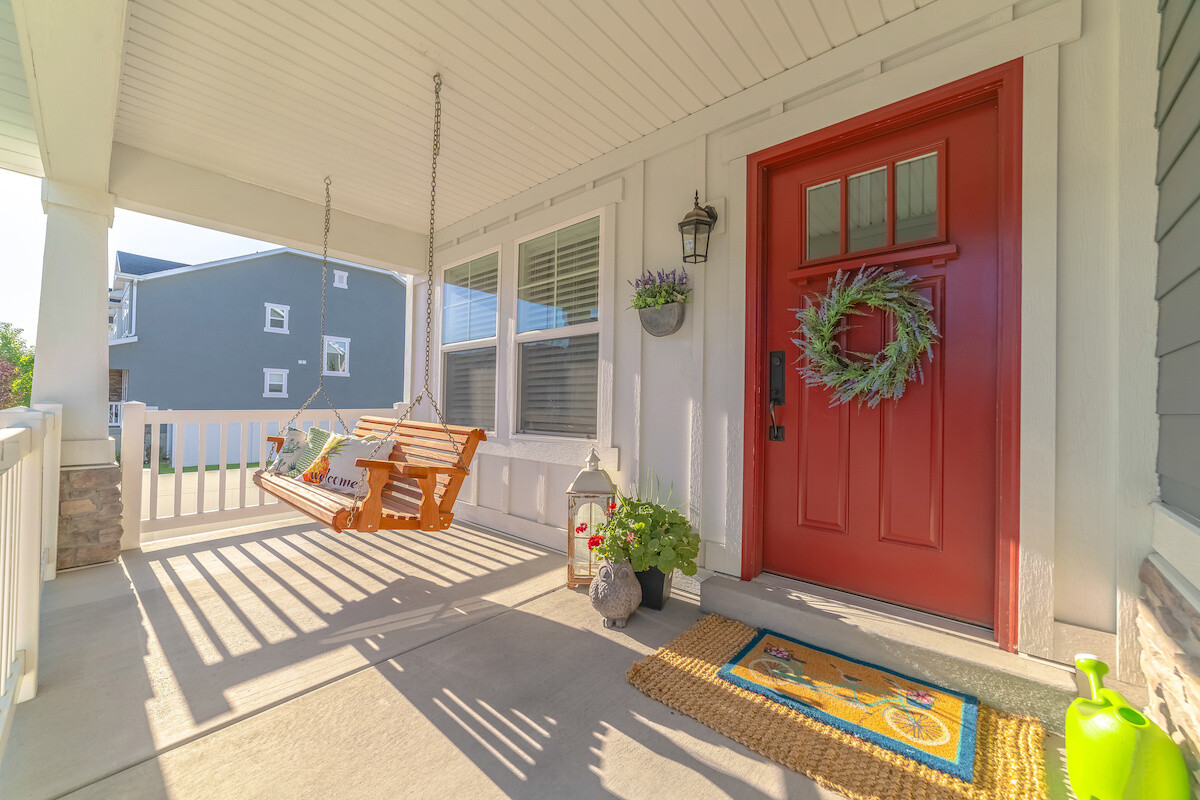

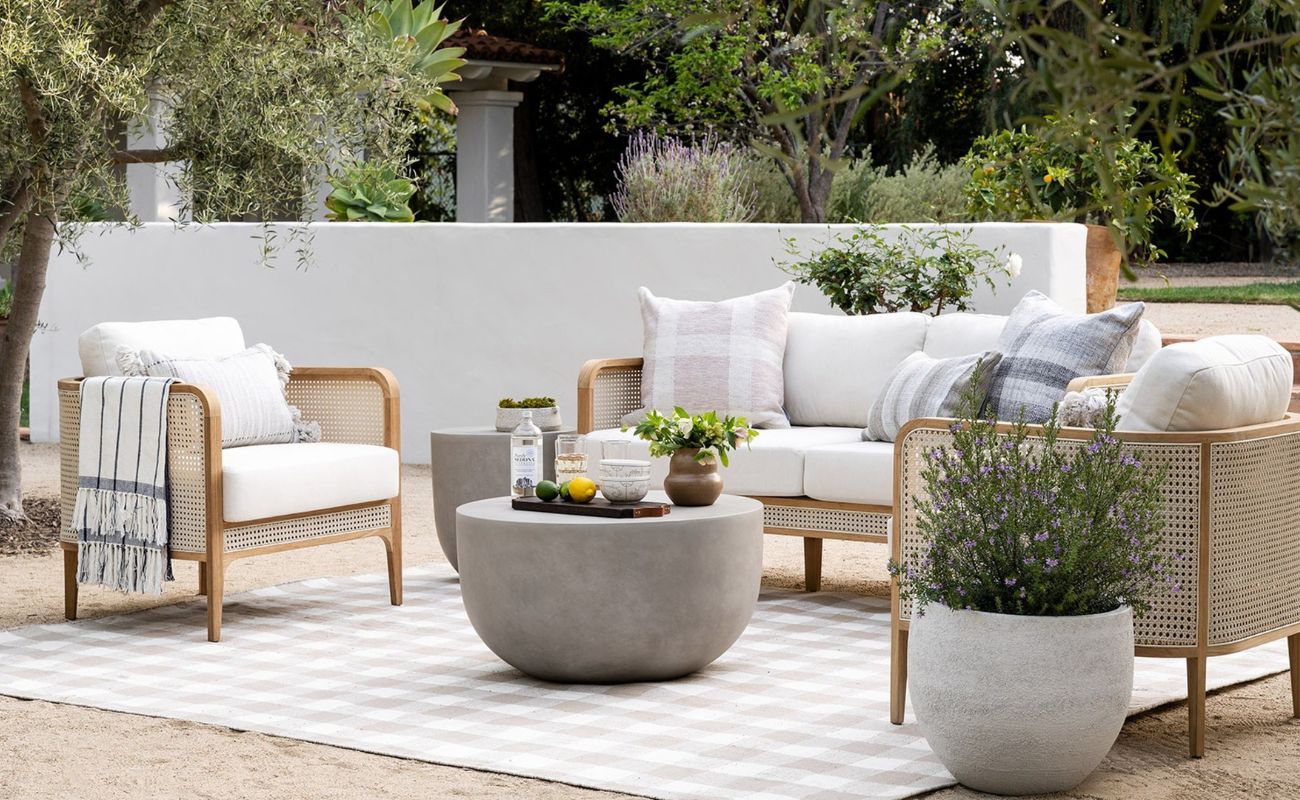

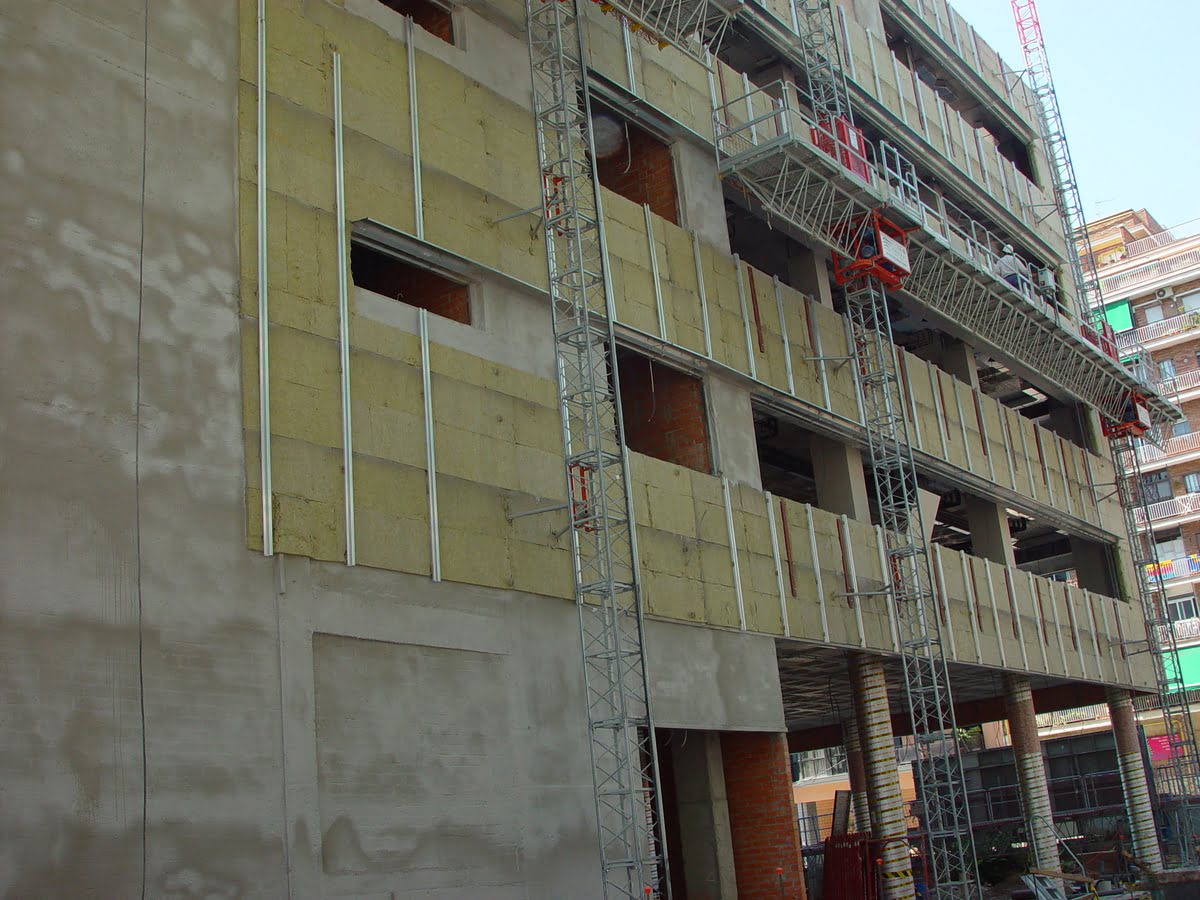
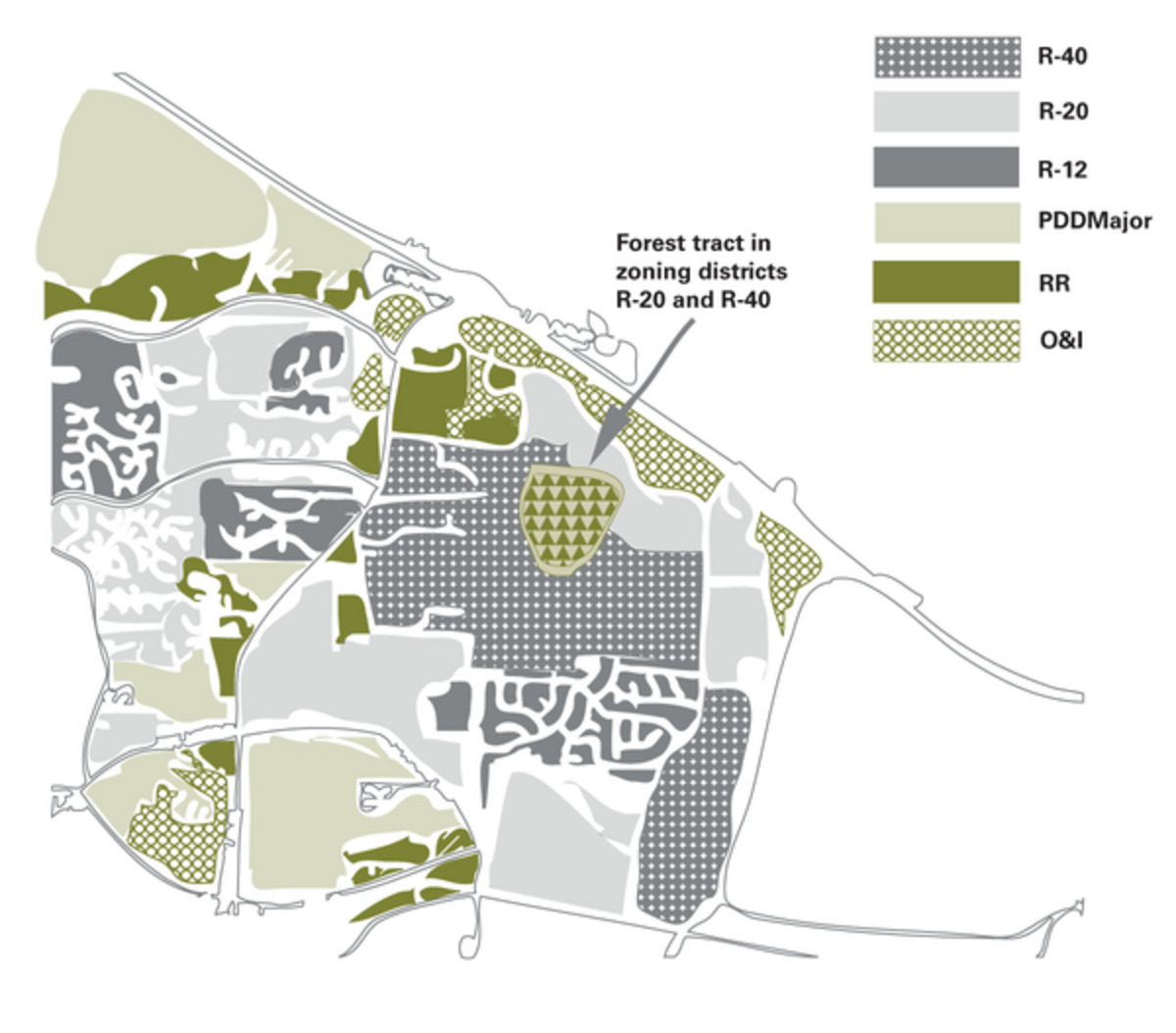


0 thoughts on “What Does Pile Mean For Rugs”